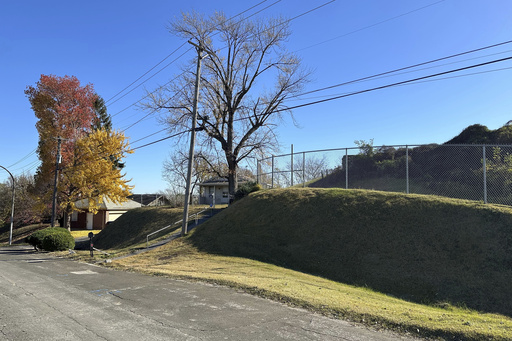
ST. LOUIS — Historically, the area now known as St. Louis was populated with over 100 Native American mounds, leading to its nickname, “Mound City.” Unfortunately, most of these mounds were destroyed by settlers, leaving just one standing today — Sugarloaf Mound. Recent developments suggest that this last remaining earthen structure may soon be returned to the Osage Nation.
On Thursday, the city of St. Louis, alongside the Osage Nation and the nonprofit organization Counterpublic, announced that an elderly woman, aged 86, who owns a residence located on Sugarloaf Mound, has consented to sell her property with plans to eventually transfer it to the Osage Nation. Furthermore, the St. Louis Board of Aldermen is set to pass a resolution in January that will formally recognize the sovereignty of the Osage Nation, according to Alderman Cara Spencer. The intended outcome of these efforts is the establishment of a cultural and interpretive center at the location, which overlooks the Mississippi River just a few miles south of the city’s core.
Andrea Hunter, director of the Osage Nation Historic Preservation Office in Pawhuska, Oklahoma, emphasized the importance of reclaiming land significant to the tribe’s history: “One step for our tribal sovereignty is reclaiming the lands that we inhabited for hundreds of years. Salvaging at least one mound in St. Louis—situated on the west side of the Mississippi River—holds tremendous significance for us as we work to restore our heritage.”
Nevertheless, a challenge remains in the form of another property atop the mound. A pharmaceutical fraternity currently owns this property, and discussions regarding its potential sale are still in limbo.
Before colonization, Native Americans constructed thousands of mounds across North America, which served various purposes, including sacred ceremonies, housing, commerce, and burial. The mounds around St. Louis are believed to date back from approximately 800 to 1450 AD. The nearby Cahokia site in Illinois, home to many mounds, is thought to have supported a population of up to 20,000 people during its heyday.
Among the prominent mounds in St. Louis were Sugarloaf Mound and Big Mound. According to James McAnally, executive director of Counterpublic, these structures were strategically located by the river as signal mounds. Native Americans on the western side of the Mississippi would use smoke signals to communicate with those in Cahokia regarding incoming vessels.
When St. Louis was established in 1764, the mounds were still visible and attracted visitors—including royalty—eager to see them, as noted by Patricia Cleary, a U.S. history professor at California State University, Long Beach, and author of “Mound City: The Place of the Indigenous Past and Present in St. Louis.” Eventually, however, removal treaties displaced Native Americans from the area, and settlers prioritized practical use for the mounds, using them as landfill for roads and railroad projects while neglecting the graves of ancestors.
“Ironically, some of those bones were reportedly discarded into the Mississippi River as they dismantled Big Mound,” Hunter stated. Today, remnants of St. Louis landmarks mark the sites where these mounds stood, notably in Forest Park, where many were removed to facilitate the World’s Fair in 1904. By the early 20th century, only Sugarloaf Mound remained intact.
In 2009, the Osage Nation acquired the initial section of Sugarloaf Mound, dismantling a house that was no longer structurally sound, to prevent further deterioration of the historic site. However, two homes were left in private ownership. One of the homeowners, Joan Heckenberg, who has resided there for 81 years since her grandfather purchased the property, has agreed to turn over her ownership to the Osage Nation when she vacates or passes away.
Heckenberg recounts how her grandparents came to love their home, despite initial skepticism about moving there. With Heckenberg’s potential sale, only one other private residence on Sugarloaf Mound remains, owned by Kappa Psi, a national pharmaceutical fraternity. According to Heckenberg, students have not occupied that building for some time, and it has occasionally been a refuge for the homeless.
A representative for the fraternity mentioned that a limited liability company oversees the house, and any sale decisions would be determined by it. While attempts have been made to discuss the selling of this residence, according to McAnally, the fraternity has not yet taken any steps in that direction.
Spencer reflected on the significance of the mounds, stating that they are crucial yet often overlooked components of St. Louis’s history, asserting, “This is a really special place for Osage history and represents something vital to our Native American heritage, which has largely been erased.”
